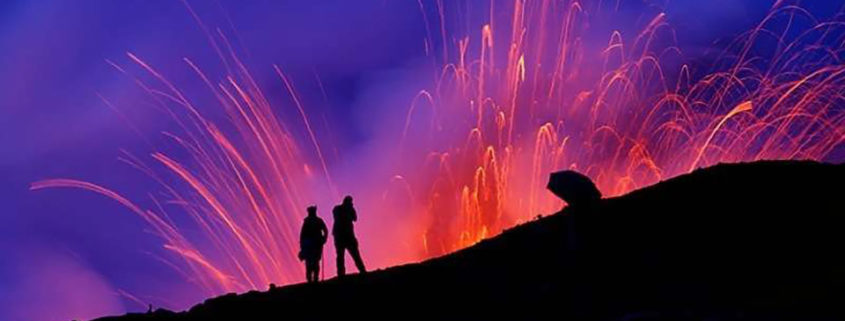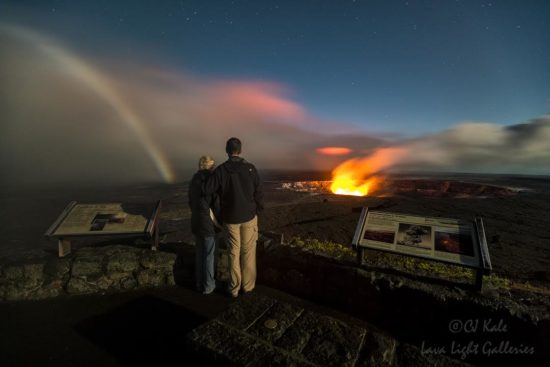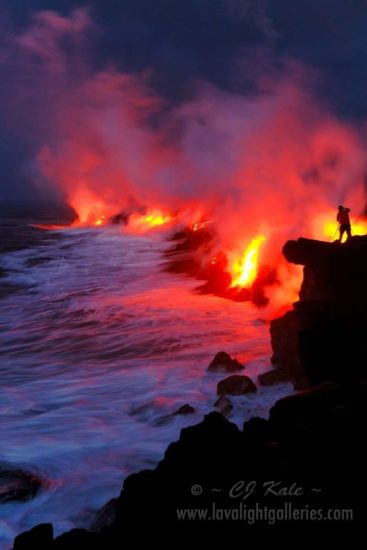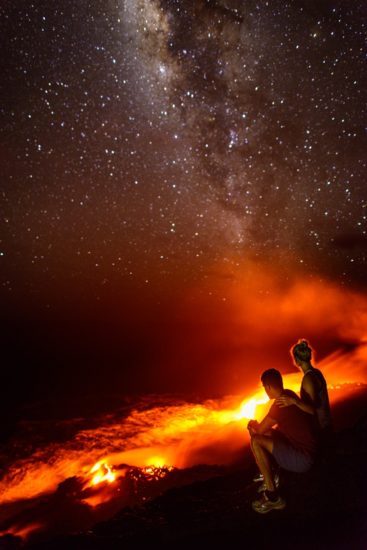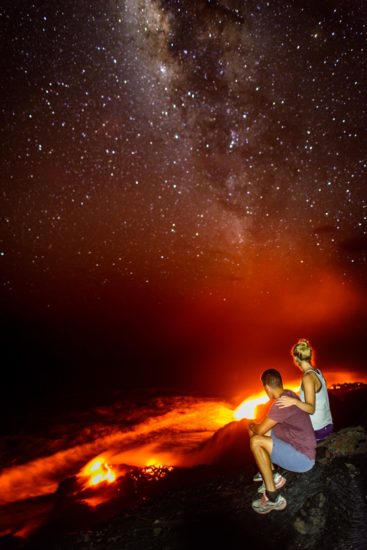Balancing Artificial and Natural Light
With all the excitement over the new 61g flow entering the sea here in Hawaii, many people are making their way out to witness this amazing sight for themselves. When doing this, you may want to take a photo of your family or friends with the volcano or the amazing night sky that you see out there. This can prove to be a difficult task as the sun goes down. Here are a few techniques and options that might just help you balance artificial and natural light to create stunning photo.
First off, the easiest of all of your options is always the silhouette. Just have your subject stay still with the bright lava or glowing steam plumb behind them and expose for the bright light and they will be rendered to silhouette.
Next, if you want them to be lit in the scene you have two options. One is a flash. With a flash, as long as you get the amount of light balanced with the light from the lava, you are golden. The second option is light painting them with a flashlight. With light painting. your subject must stand still while you paint them with light. When light painting, you may need to try it a few time until you get the amount of light just right. It’s easiest to light paint in a longer exposure. To balance the light when light painting, adjust the brightness of your light or the amount of time you have the light on your subject.
Finally, if you want to have some fun and capture a really technical shot, why not capture your friends or family with the lava under the stars in one photograph? It’s easy to do in a composite image. In fact, if you are planning to do a composite, there is no real need to know any of the photographic skills that I’ve already mentioned. You don’t even need family or friends with you or even a starry night; you can take shots and piece them together later. But if you want to capture the lava, stars, and people in one shot, here’s how you do it.
First, use a wide lens and put the people where you want them in frame… but not too close because, when you focus on them, you want to be able to make out what’s behind them. A little soft on the background is OK but, if it is completely blurry, you won’t be able to tell where they are. Set your camera on a tripod and focus on your people. Then set your exposure for the stars (30 seconds at 3.5 at ISO 3200 is just an estimated exposure). This exposure will completely blow out the lava as it really only needs to be exposed for about 2 to 3 seconds at this aperture and ISO. Now to balance the light, here’s the trick… Look through the viewfinder and use a black card (or what ever you have that can block out light, even your hand, if necessary) and cover the front of the lens to block your view of the lava; leave the stars uncovered. Make sure your people are positioned to be blocked by the card at the same time. Count out 27 seconds. Tell your people to be still and drop the black card. If you want them lit up, use a flash or light painting to do so (otherwise they’ll be rendered silhouettes).
Have fun and be safe out there!

